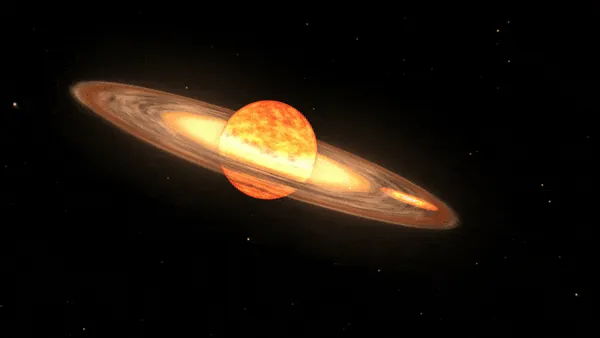
Brace Yourself for a Celestial Spectacle: A 'New Star' Set to Dazzle the Night Sky!
2024-09-29
A New Star is Born in the Corona Borealis
In an astronomical event that promises to be nothing short of spectacular, stargazers worldwide are eagerly anticipating the appearance of a "new star" in the Corona Borealis constellation, located approximately 3,000 light-years from Earth. This rare event will mark the resurgence of a long-dormant star, heralding an explosion that could temporarily outshine even Polaris, the North Star. Remarkably, the last time this stellar body lit up was nearly 80 years ago, and it will be another eight decades before it erupts again, making this occurrence extraordinarily rare.
The Stellar Body: T Coronae Borealis (T Cor Bor)
The star in question is T Coronae Borealis (T Cor Bor), a white dwarf that has been accumulating material from a neighboring red giant star. Astronomers have already detected a notable dip in brightness from T Cor Bor, a precursor that aligns closely with the patterns noted prior to its last outburst in 1946. Although the exact cause of this dimming remains uncertain, experts agree that a spectacular nova is imminent. “We know it’s going to go off — it’s very obvious,” stated Edward Sion, a professor of astronomy and astrophysics at Villanova University.
A Unique Opportunity for Scientific Study
This event is not only a visual feast for the general public but also a critical opportunity for scientists. Astrophysicists have allocated significant observational time on various ground- and space-based telescopes to gather comprehensive data about nova phenomena, which have only been observed a handful of times throughout history. T Cor Bor is one of just ten recurrent novas documented in our Milky Way galaxy, providing researchers a unique chance to study the intricate processes involved in its explosive transformation.
Monitoring the Nova: NASA’s Fermi Telescope
NASA’s Fermi gamma-ray space telescope is closely monitoring T Cor Bor, taking readings multiple times a day. Astrophysicists are particularly interested in measuring the gamma-ray emissions that will surge following the nova's explosion, as this information will provide insight into the temperature of the ejected material and the speed at which it is expelled from the white dwarf.
Observing Real-Time Stellar Activities
Elizabeth Hays, project scientist for the Fermi telescope, emphasized the significance of this event, stating, “Usually, the activities of white dwarf stars take so long, we never get to observe them in real-time.” The rarity of T Cor Bor's eruptive behavior within a human lifetime is a compelling reason for researchers to piece together its mysteries, especially given that no advanced X-ray or gamma-ray telescopic technology existed during its last outburst.
A Collaborative Telescope Effort
Excitement is mounting in the scientific community as the T Cor Bor nova will be observed across several cutting-edge telescopes, including the James Webb Space Telescope, Swift, and the INTEGRAL space telescope, alongside the ground-based Very Large Array in New Mexico. This unprecedented collaboration among telescopes will allow scientists to capture and analyze data across various wavelengths, further enhancing our understanding of the stellar phenomena at play.
Long-lasting Visibility of the Nova
While the nova will be visible to the naked eye only for a few days, it will continue to be observable by various telescopes in different spectrums for months and years, creating a comprehensive data set that will inform theories about such explosive cosmic events. “We’ll be eagerly watching for any fluctuations in brightness that could shine a light on how the nova interacts with its companion star’s wind,” Hays added.
Safety from the Stellar Explosion
Fortunately, T Cor Bor's distance from Earth means that, despite the violence of its upcoming explosion, there is no danger to our planet. “It’s far enough away that it’s not going to affect us,” reassured Sion.
Prepare for a Celestial Event!
So, grab your telescope and get ready to gaze into the night sky! A cosmic spectacle is on the horizon, and it’s sure to be an event that both scientists and skywatchers alike will cherish for generations to come. Don’t miss out on this once-in-a-lifetime opportunity—let the universe amaze you!



 Brasil (PT)
Brasil (PT)
 Canada (EN)
Canada (EN)
 Chile (ES)
Chile (ES)
 España (ES)
España (ES)
 France (FR)
France (FR)
 Hong Kong (EN)
Hong Kong (EN)
 Italia (IT)
Italia (IT)
 日本 (JA)
日本 (JA)
 Magyarország (HU)
Magyarország (HU)
 Norge (NO)
Norge (NO)
 Polska (PL)
Polska (PL)
 Schweiz (DE)
Schweiz (DE)
 Singapore (EN)
Singapore (EN)
 Sverige (SV)
Sverige (SV)
 Suomi (FI)
Suomi (FI)
 Türkiye (TR)
Türkiye (TR)